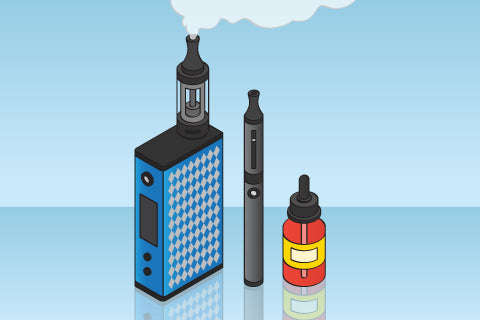Thinking It Through
Blog · Nov 13, 2023

Advertisements are like highlight reels. They spotlight key features in their attempts to entice you to buy things. Often they are things you might otherwise not consider or were not previously interested in.
Advertising messaging is tailored to get you to think or act in a certain way, but it doesn’t always factor all of the variables into the equation.
This doesn’t mean advertising is inherently bad.
It’s just incomplete and selective.
Thirty Helens Agree
We’ve all heard, “4 out of 5 dentists recommend Brand X sugarless gum to their patients who chew gum,” a claim used in marketing campaigns to this day. Sounds simple enough. However, it’s actually quite misleading.
For starters, it raises a few questions. Do the four dentists recommend their patients chew gum, or do they instead mean that if you are going to chew gum, chewing Brand X gum is a better alternative to chewing other brands of gum? What if you asked a follow-up question to the claim like, “is it better to not chew gum at all?” or “How does chewing gum affect my dental health?”
The distinction is significant because the advertisement implies that chewing Brand X gum is an unalloyed good as evidenced by the responses of the surveyed dentists. However, the caveat that the recommendation is aimed at those who already chew gum means the recommendation doesn’t apply to non-gum chewers.
What are the recommendations for those who don’t already chew gum? Are they recommending everyone chew sugarless gum because it is good for your teeth? Hardly.
Advertisers purposely fail to mention many elements in blanket statements like this to let the implication drive the message. The same is true for other product advertisements and claims.
Because we are interested in safer and healthier alternatives to the things we do, we desire products and services that let us keep our favorite pleasures with reduced risk. We just have to work harder to get the whole story before we make a choice.
Smoke Screen
The advent of the electronic cigarette promised to do just that, let people keep smoking, or at least consuming nicotine, without the health risks associated with smoking.
But just because something is presented as a safer alternative to something else, it isn’t automatically safe on its own.
It only possibly makes it… less unsafe.
As vaping started to gain in popularity in the early 2000s, especially among adolescents, half-truths immediately started to mushroom as attempts to justify its use as a “safer alternative” to smoking.
Even if vaping were a safer alternative to smoking, (emphasis on the word were) it doesn’t mean we should automatically give vaping a free pass.
Vaping produces plenty of unhealthy by-products of its own.
Vaporware
Many are under the impression that vaping is less risky than smoking because these products are not smoked and do not produce smoke. It’s true many of the toxic compounds consumed through cigarette smoking are a product of the combustion of tobacco leaves or marijuana leaves. The curing agents in smoked tobacco also produce carcinogens like nitrosamines when heated. These compounds are not produced by e-cigarettes.
While it’s true that e-cigarettes exude fewer toxins than combusted tobacco or cannabis products that are smoked, e-cigarette aerosol is not just water vapor. Along with the nicotine or THC concentrates, vaping products include preservatives like formaldehyde and other chemical agents to stabilize and enhance the chemical atomization. Vaping exposes users to the same chemical compounds found in automobile exhaust, only in a more concentrated, directly inhaled form.
Nicotine and THC are not benign substances. They are addictive chemical compounds that disrupt the healthy development and function of the adolescent brain and body. Nicotine and THC consumption carries numerous health consequences regardless of whether the products that contain them are smoked, dipped, chewed, eaten, or vaped.
Additionally, the addictive nature of nicotine ensures that even experimental use can lead to addiction. Similarly, THC affects the brain’s reward system, which can lead to psychological addiction.
Regardless of the delivery device, though, there is a common denominator between smoking tobacco and/or cannabis products and vaping them. Smoked tobacco products contain nicotine, and tobacco products that are vaped contain nicotine. Similarly, cannabis products that are smoked contain THC, and marijuana products that are vaped contain THC.
Do Pay Attention to the Man Behind the Curtain
It’s only when we pull back the curtain on vaping, and shine a light on the persuasive language markers use to try to entice you to indulge in unhealthy vaping, that we can get to the truth.
Media influences across multiple outlets infuse alluring, seductive language about vaping into much of the messaging, such as the “Vape with Confidence” and “Vape to Live, Live to Vape” advertising slogans. This type of messaging is a driving force behind many peer pressure influences’ suggestions to participate in vaping.
So, we need to question everything. Perform our due diligence. Ask questions.
Is the information we’re being handed about vaping ‘factual data’ from ‘respectable sources’ or just viral marketing messaging? For instance, which demographic do you suppose purveyors of vape products target with their cotton candy and bubble gum-flavored vape juice?
Act Now
When we apply our critical thinking and decision-making skills to challenge peer and media messaging, we’re better equipped to analyze influences and factor them accordingly into our entire decision-making process.
By considering the impact the choice to vape will have on our ability to keep making healthy choices and good decisions, we’ll be more inclined to deduce how vaping can impact our relationships with others.
We all have to sift through quite a lot of vaping messaging in order to unearth the few scientifically backed nuggets of truth. Then we can flip the script mentally and move forward on our journey of making positive, healthy choices rather than engaging in negative, risky behaviors like vaping.